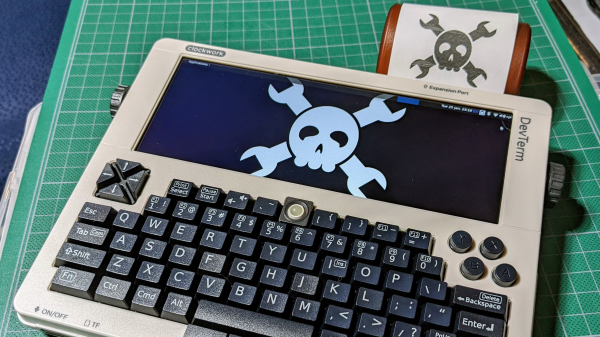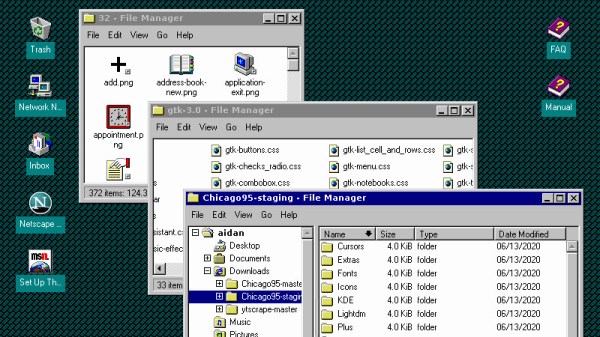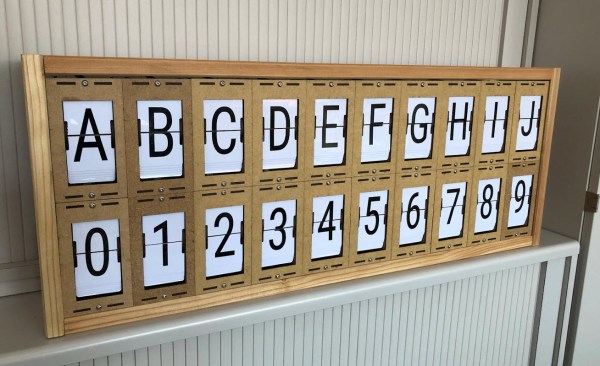Sometimes we cover works of extreme technological merit here at Hackaday, other times we cover interesting projects that while they might not lie at the bleeding edge are interesting enough that they deserve a wider audience. Sometimes though, we bring you something in this field simply because it amuses us and we think it will you too. Such is the case with [Bryan Lunduke]’s look at making a Linux desktop look like Windows 95. And lest you think that it might be yet another skin to make Windows users transition to Linux a bit easier, the aim and result is to make it look exactly like Microsoft’s mid-90s desktop.
Underneath it all is the relatively familiar xUbuntu distribution, with a deliciously troll-worthy project called Chicago95 atop it. This takes some existing Windows 95 theme and icon projects, and adds GTK themes, an MS-DOS shell theme, the ability to install those cheesy ’90s Plus! themes, and a Microsoft Office 95 theme for LibreOffice. It really does deliver an experience very close to the Redmond original.
So, what’s the point here in 2022? In the first instance it’s an excellent opportunity to troll open-source enthusiast friends with a crusty laptop seemingly running ’95 and showing YouTube videos on Netscape Navigator 3. But beyond the jokes there is a serious use for it. There may be many criticisms that can be leveled at Windows 95, but it’s safe to say that its GUI was a significant success whose echoes can be found in many desktops here in 2022. There are a huge number of people in the world who are completely at home in a Windows 95 environment who might struggle with a Linux desktop, and this gives them a way to be immediately productive. Would you give your grandmother a Linux box with this desktop?













